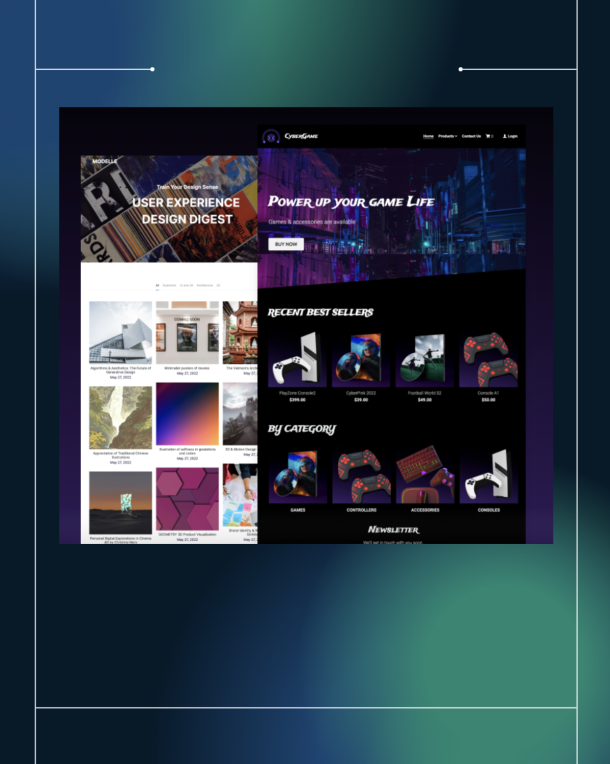Are you sold on the benefits of blogging for your business? That’s a good start. Along with the right business blogging tools, blogging itself lies at the foundation of inbound marketing.
With business blogging, you get relevant traffic, you have a chance to make an impact, you open windows to help existing (and potential) customers to connect with your brand, generate leads, sell, and profit from it all eventually.
Not using business blogging tools is also one of the most common business blogging mistakes you’d make. Use them or miss the boat (and it’ll sail by faster than you can fathom).
To make it work though, there are a few critical things to remember:
- A pre-determined blogging frequency or a publishing velocity is mandatory. You can’t hope to achieve anything meaningful by publishing one blog post here and another blog post there.
- Your social presence has to be multi-pronged — distribute content, connect with others, distribute more content, and establish authority. Then, measure these social media efforts, the right way. Milk social media for all its worth.
- Email marketing strategy helps you build subscribers (a pipeline, if you must), nurture your leads, and sell effectively.
Those are the basics. These are critical before you drift off into the digital equivalent of a utopian planet like Pandora (Ref: Avatar Movie).
What are the best business blogging tools, you ask? Don’t spend another lifetime looking for these business blogging tools.You don’t have to spend the equivalent of your mortgage and car loan digitally just to afford a decent marketing stack.
Here are some of the must-have business blogging tools to ensure that your blogging efforts bring in results for your business:
Descript & Loom [For Adding Videos To Blogging]
Videos are the best thing you’d do for your blogging. Blog posts with embedded videos tend to perform better (most of the time) than those without.
Now, you don’t have to setup full-fledged studios for video. Your basic equipment — such as your smartphone, earbuds/headphones with microphones — is more than enough to at least get started with videos.
If and when you go down on the path of making videos, you’ll need tools like Loom (quick videos, showing off your expertise and personality) and Descript (editing, made easy) help you speed up your video production, streamline your process of making & distributing videos, and more.
Of course, there are several other free video tools, video tools you can do sales prospecting with, video tools to create ads, and tons of tools that also enable you to tap into the power of AI to create videos for you.
Read:
Descript Features You’d Fall in Love With
SEMRush [ For Blogging SEO]
Think of SEMRush as an equivalent of a high-quality, ever-evolving Swiss Army knife for blogging. It’s one of the best business blogging tools you should start with.
Pick up a free account of SEMRush and you’ll be able to do a hundred things related to business blogging, SEO, and social media — all at once.
Both the free and paid versions of SEMRush have several features such as SEO Audit, Domain overview, keyword gap analysis, position tracking, the Keyword Magic tool, the backlink audit feature, the social media mentions feature, the on-page SEO feature, and more.
SEMRush also helps distribute your content on social media effectively, for free. So, you don’t have to spend extra on HootSuite or Buffer.
It’d take a book to explain what SEMRush can do for you, so I’ll skip that part.
In addition to already existing free tools such as Google Keyword Planner, Google’s “People Also Ask…” feature, Google’s Autosuggest feature, using SEMRush (even if you only use the free account) puts you ahead of your competition.
For eCommerce, there’s an full plate of Google’s features specifically created for eCommerce brands and using Google Bard can also help you speed up and streamline your content marketing efforts.
Google Analytics + MonsterInsights [For Analytics & Tracking]
Google Analytics is a must-use business blogging tool (and its uses stretch into — and for — every category of business out there). The only issue is that it can be overwhelming for some users.
Experienced marketers and agencies don’t use Google Analytics as well as they should. So, as business owners, you’ll be forgiven if you can’t plumb the full potential of Google Analytics.
To make it simpler for you, try MonsterInsights. With a single plugin, you get to draw most of the power of Google Analytics, but made simpler for you. Get the data you need such as traffic, conversions, link clicks, and more.
MonsterInsights makes for one of the most effective business blogging tools since it cuts out the crap and shows you information that you need to help do your digital marketing better.
Note: If you don’t want to use another plugin for analytics, consider using tools such as AnyTrack and SuperMetrics
OptinMonster [For lead Generation Through Blogging]
If you are blogging for business, you should stop asking useless questions such as:
- Is It alright to use pop-ups, slide-in, exit-intent pop-ups, etc., on my website?
- Is it ethical to “ask people to sign up”?
- Are pop-ups irritating?
It doesn’t matter what you think of lead generation (and it’s OK if you don’t like the very thought of it — it’s only human).
This is business we are talking about, and lead generation is essential for your business.
That’s why lead generation happens to be a critical thing to do when you blog for business.
Use OptinMonster with several features such as a simple (and always evolving) drag-and-drop builder, exit-intent pop-ups, slide-ins, welcome mats for making offers, geolocation (and geotargeting), countdown timers, and so much more.
OptinMonster works with any platform you’d build your website on (Not just WordPress).
For instance, it’d work even if you used Wix, Simvoly, SquareSpace, Mozello, and others.
Other options for lead generation that you can choose from:
MailChimp, MailerLite, Moosend, or ConvertKit [ For Email Marketing]
For email marketing, there are three main options (great for almost all kinds of businesses).
Note: Last time I checked, MailChimp doesn’t work with Shopify [Now, it works, just so you know]
ConvertKit seems positioned for content creators (such as those that sell digital products, online courses, and memberships). MailChimp is generic and helps most types of businesses. MailerLite and Moosend are built for eCommerce businesses, regular businesses, bloggers, and also content creators.
Meanwhile, Klaviyo and Drip have a strong leaning towards eCommerce email marketing. Learn more about how to choose the right email marketing platforms.
Depending on your business, choose one email marketing tool and get started. Don’t think so much about the tool itself but the very aspect of email marketing.
To be honest, that’s all you need as a part of your marketing stack. These are really all the tools you need (most are free, some are paid).
What are your choices for the best business blogging tools? Let me know and tell me why.
Tell me all about it on Twitter, LinkedIn, or my LinkedIn Brand page.

